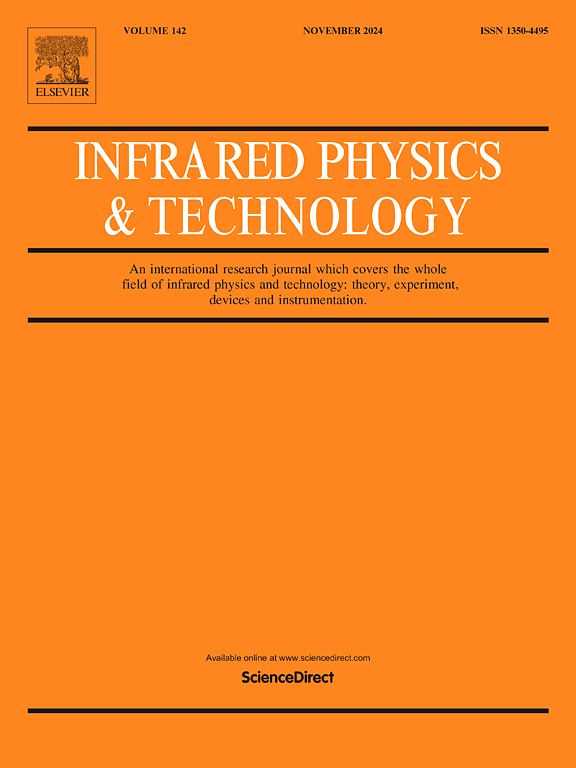The impact of γ-irradiation on the response nonlinearity in HgCdTe infrared detectors
IF 3.1
3区 物理与天体物理
Q2 INSTRUMENTS & INSTRUMENTATION
引用次数: 0
Abstract
This work investigates the impact of γ-irradiation on the response nonlinearity in mercury cadmium telluride (HgCdTe) photovoltaic detectors. A dual-aperture test system with ± 1 % measurement uncertainty is assembled to quantify response nonlinearity over a wide dynamic range of photon irradiance at different doses of γ-irradiation. The results demonstrate that, at high photon irradiance displacement damage induced by γ-irradiation will reduce the minority carrier lifetime, potentially leading to a significant increase in response nonlinearity. At a total dose of 40 krad (Si), the response nonlinearity of some detectors increases about 20 %. Additionally, results show that dark current and spectral response remain unaffected during the shift testing, while the series resistance increases and the detectivity slightly decreases for some devices. In particular, γ-irradiation is observed to have a more substantial impact on long-wavelength detectors. Annealing treatments after irradiation heals majority of these performances. In contrast to conventional measurements to blackbody responsivity, response nonlinearity amplifies subtle signal variations caused by low-dose γ-irradiation, significantly enhancing the experimental precision and sensitivity.
γ辐照对HgCdTe红外探测器响应非线性的影响
本文研究了γ辐照对碲化汞镉(HgCdTe)光伏探测器响应非线性的影响。设计了一套测量不确定度为±1%的双孔径测试系统,用于测量不同剂量γ辐照下光子辐照度在宽动态范围内的响应非线性。结果表明,在高光子辐照下,γ辐照引起的位移损伤会降低少数载流子寿命,从而导致响应非线性的显著增加。在总剂量为40克拉(Si)时,某些探测器的响应非线性增加约20%。此外,结果表明,在移位测试过程中,暗电流和光谱响应没有受到影响,而串联电阻增加,某些器件的探测率略有下降。特别是,观察到γ辐照对长波长探测器有更大的影响。辐照后的退火处理修复了大部分这些性能。与传统的黑体响应度测量相比,响应非线性放大了低剂量γ辐照引起的细微信号变化,显著提高了实验精度和灵敏度。
本文章由计算机程序翻译,如有差异,请以英文原文为准。
求助全文
约1分钟内获得全文
求助全文
来源期刊
CiteScore
5.70
自引率
12.10%
发文量
400
审稿时长
67 days
期刊介绍:
The Journal covers the entire field of infrared physics and technology: theory, experiment, application, devices and instrumentation. Infrared'' is defined as covering the near, mid and far infrared (terahertz) regions from 0.75um (750nm) to 1mm (300GHz.) Submissions in the 300GHz to 100GHz region may be accepted at the editors discretion if their content is relevant to shorter wavelengths. Submissions must be primarily concerned with and directly relevant to this spectral region.
Its core topics can be summarized as the generation, propagation and detection, of infrared radiation; the associated optics, materials and devices; and its use in all fields of science, industry, engineering and medicine.
Infrared techniques occur in many different fields, notably spectroscopy and interferometry; material characterization and processing; atmospheric physics, astronomy and space research. Scientific aspects include lasers, quantum optics, quantum electronics, image processing and semiconductor physics. Some important applications are medical diagnostics and treatment, industrial inspection and environmental monitoring.

 求助内容:
求助内容: 应助结果提醒方式:
应助结果提醒方式:


